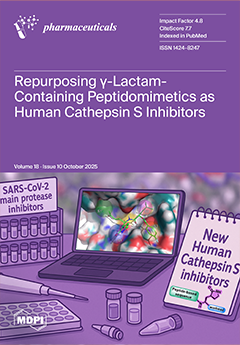Objectives: Research on the antimicrobial effect of
Hypericum plant constituents is very rarely accompanied by studies of the cytotoxic effect on cell lines. In the current study, besides microbiological tests, an investigation of the cytotoxicity of
Hypericum active ingredients on five non-tumorigenic cell lines, as well as research into the effect on other factors of host homeostasis, was performed.
Methods: The main methods applied included an MTT assay, the broth microdilution method (BMD), real-time PCR, live cell imaging with Hoechst dye, Western blot, an enzyme-linked immunosorbent assay (ELISA), and skin irritation test on rabbits.
Results: The mean inhibitory concentrations (IC
50) of six selected agents—previously phytochemically characterized extracts and compounds—ranged from 0.63 to 48 µg/mL. Due to their strong antimicrobial effect and favorable cytotoxic profile, the extract RochC from
Hypericum rochelii and the compound olympiforin B from
Hypericum olympicum were selected for subsequent studies at their previously determined minimum inhibitory concentrations (MICs) against
Staphylococcus aureus—0.625 and 1 µg/mL, respectively. These doses were lower than their IC
50 values and the maximum tolerated concentrations (MTCs), according to ISO 10993-5, Annex C, for fibroblast cells, including a human gingival line. The MIC values of RochC and Olympiforin B against the cariogenic
Streptococcus mutans were 6 and 3 µg/mL, respectively, values lower than the IC
50 values of the gingival cells. Olympiforin B inhibited the gene expression of the staphylococcal biofilm-related genes
icaA and
icaD, while RochC induced
icaA and had a versatile effect on
icaD. The MIC values for lactobacilli strains were higher than for
S. aureus. The phytoconstituents did not cause cytopathic effects or apoptosis in CCL-1 fibroblasts at 2 × MIC. However, the agents at 1 × MIC significantly induced Atg5 and Atg7, proteins related to autophagy. Cytochrome P450 was not induced in liver cells, with the exception of a dose of 2 × MIC of RochC. The agents did not irritate rabbit skin in vivo at a dose of even 10 × MIC.
Conclusions: The extract and compound have potential for further pharmacological development.
Full article






